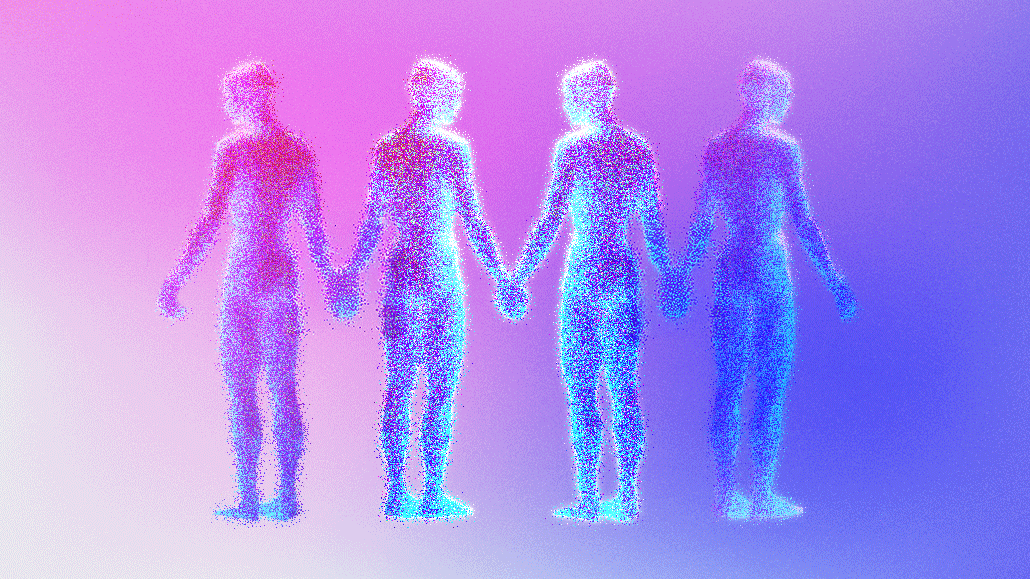H&M, Nike and other brands use AI to duplicate celebrities and drive original storytelling

Storytelling has always been at the core of brand marketing. Now, with AI becoming more deeply embedded in creative workflows, marketers are finding new ways to scale emotional, multimodal narratives that connect with audiences across channels.
According to a recent study conducted by DMEXCO and Kantar, emotional advertising increases brand demand by more than 60%. In a dynamic and crowded landscape, emotional narratives — especially those that can be personalized, scaled and optimized in real-time — can drive greater impact.
“AI empowers brands to personalize storytelling like never before,” said Verena Gründel, host and director of brand and communications at DMEXCO. “By analyzing behavior, cultural context and preferences across channels, AI can tailor messages, visuals, video, audio and product recommendations to match individual needs.”
The following case studies, presented by DMEXCO, showcase how leading brands across sectors use AI tools to elevate storytelling in ways that are creative, emotional and purpose-driven.
H&M, Nike and Cadbury deploy digital twins as part of visual storytelling
As AI becomes more entrenched in creative processes, it enables brands to create unique visual experiences at scale. In many cases, AI is a tool that helps brands tell a story more efficiently or seamlessly than it could have been told by other means.
For example, in a spring 2025 campaign, clothing retailer H&M photographed 30 models and created photo-realistic digital twins using AI. Some of the ads paired the human and AI versions side by side, even including quotes from the models about their experiences — creating a striking visual effect that blurred the line between real and digital. H&M ensured all models retained image rights and were compensated — addressing ethical questions about AI’s role in creativity while spurring conversations.
“Authenticity and transparency are crucial,” said Gründel. “Brands should disclose how AI is used — for example, by labeling AI-generated content, as H&M does — while keeping real people at the center of the story. When creatives are involved and digital images are used fairly, storytelling remains emotional, approachable and ethical.”
Similarly, athleticwear brand Nike used AI for its 50th anniversary “Never Done Evolving” campaign, which featured tennis icon Serena Williams playing in a virtual tennis match against herself. AI analyzed Williams’ movements and behavior from past matches to create the digital simulation. The result was an emotional story about discipline, mental strength and evolution, serving as a visual manifesto that emotionally amplified Nike’s “Just Do It” brand message.
“In our digital world, where attention spans are shrinking and content is infinite, the stories that truly move us are the ones we remember,” said Jens-Christian Jensen, lab manager at Bundesverband Digitale Wirtschaft (BVDW) e. V. and Chief Strategy Officer at Plan.Net Group.
“Generative AI should be viewed as a creative co-pilot, and never as a replacement for human imagination,” he said. “Just as Photoshop didn’t kill storytelling, but unleashed a new visual language for creatives, AI opens fresh narrative possibilities. The story always begins with human insight and emotion. AI simply helps bring it to life faster, bolder and more dynamically than ever before.”
In another example that balanced digital twinning with cultural insight, candy maker Cadbury used AI facial mapping to create a digital version of Bollywood star Shah Rukh. Through geotargeting, the campaign promoted small, local businesses across India during Diwali. The hyperlocal, socially impactful effort resulted in a 35% sales lift for Cadbury Celebrations and widespread industry recognition.
“AI and digital twins enable hyper-personalized, immersive brand experiences,” Gründel said. “Simply adapting to local and cultural insights can massively boost marketing ROI. The DMEXCO x Kantar study shows that relatable realities can boost future brand demand by 37 points and impact by 31 points. Why? Because relevance grows when people feel seen, understood and culturally addressed.
“AI helps brands scale that kind of relatable storytelling — turning global reach into local resonance,” she said.
Synthesia and Red Lobster use AI for original ad creations
Other successful AI efforts rely on these tools to create something completely new — sharing narratives that create a sense of purpose or place.
Consider the case of Synthesia, a platform that enables users to generate videos with AI, using features such as AI avatars, generated voiceovers, script-to-video conversion and real-time translations. Synthesia markets itself through its tech, “making the tools the story” and demonstrating how smart content creation with AI works in practice. For example, a demo of the AI video builder uses some of the same AI avatars available for users creating their own AI videos. In man-on-the-street-style social videos, passersby are asked which video presenters are real and which are AI avatars — and are frequently stumped.
For B2B brands in particular, showcasing product capabilities through this type of engaging storytelling doubles as both marketing and proof of concept. The fact that much of Synthesia’s marketing content is produced by AI is part of the message itself.
“AI is a fundamental transformation that’s reshaping how we create, make decisions and forge connections,” said Jensen. “The best campaigns don’t just showcase AI; they harness it to drive real, meaningful impact.”
In an example of sonic storytelling, restaurant chain Red Lobster created 30 AI-generated songs across genres like pop, jazz and country to promote its Cheddar Bay biscuits.
With lyrics referencing the biscuits’ addictive, buttery flavor and fluffy texture, this approach reframed a classic side order into an entertainment-driven, multimodal experience that resonated with its target groups — capturing the very human experience of taste. Similar to Synthesia, Red Lobster’s musical campaign didn’t shy away from its use of AI, with the brand dubbing its playlist as “Cheddar Bay-I.”
“Artificial intelligence can scale content, add emotion or translate it into new formats — but it cannot replace a genuine narrative,” Gründel said. “It’s not just about what is technologically possible, but above all about why and for whom you are telling a story.
“An open, transparent approach to AI — preferably with a wink, as in Red Lobster’s ‘Cheddar Bay-I’ — creates trust and closeness,” she said. “The interplay of all elements is crucial here: sound, image, text and context must fit together harmoniously. Because, despite all the technological sophistication, one thing remains true — the message must remain human: empathetic, credible and relevant.”
Balancing AI and authentic storytelling for engaging campaigns
Across these campaigns, a common thread emerges: AI is not replacing human storytelling but is expanding its possibilities. Sometimes, AI is used as a conduit to share a narrative, but other times, AI tells a story that exists, in large part, because of the technology itself. And whether through visuals, interactivity, hyperlocal personalization or sound, the real impact is created when brands maintain their human essence.
“Successful AI-driven storytelling will be defined by how human it feels, not how automated it appears,” Jensen said. “AI offers the incredible opportunity to make storytelling both personal and data-driven, transforming every interaction into a tailored experience.
“That’s an enormous creative opportunity,” he said. “The key is letting AI enhance your story while never allowing it to dictate it, all while staying deeply rooted in your brand’s core values, authentic voice and true purpose.”
Partner insights from DMEXCO
More from Digiday

Here are the biggest moments in AI for publishers in 2025
Here are some of the moments that defined how publishers adapted to the AI era this year.

Digiday+ Research roundup: Gen Z news consumption and diversification in the DSP space were 2025’s top trends
As 2025 winds down, we rounded up the biggest trends of the year, based on the data that resonated the most with Digiday’s readers.

Pandora is betting on AI agents to scale service and emotional selling during the peak holiday season
Pandora is using AI agents to scale customer service and replicate emotional in-store selling online, just as peak season puts pressure on margins and teams.








